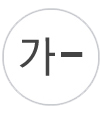| The Product Piracy Nightmare | |
| When you slip into a pair of jeans that you bought at The Gap, it probably never occurs to you that they might not really be Gap jeans. Neither does it occur to you when you swallow a cholesterol-lowering medicine that it might be a fake ?or even dangerous. And if youлӯӯe ever driven a Chevrolet, it has probably never crossed your mind that it might not be a real Chevy. | |
 |
 |
 |
 |